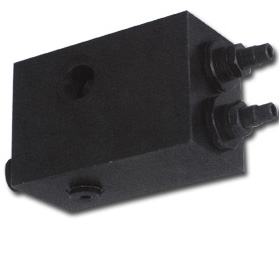|
|
|

A flow control valve regulates the flow or pressure of a fluid. Control valves normally respond to signals generated by independent devices such as flow meters or temperature gauges.
Globe control valve with the pneumatic actuator and smart positioner
Globe control valve with the pneumatic actuator and smart positioner
Control valves are normally fitted with actuators and positioners. Pneumatically-actuated globe valves are widely used for control purposes in many industries, although quarter-turn types such as (modified) ball and butterfly valves are also used.
Control valves can also work with hydraulic actuators (also known as hydraulic pilots). These types of valves are also known as Automatic Control Valves. The hydraulic actuators will respond to changes of pressure or flow and will open/close the valve. Automatic Control Valves do not require an external power source, meaning that the fluid pressure is enough to open and close the valve. Automatic control valves include: pressure reducing valves, flow control valves, back-pressure sustaining valves, altitude valves, and relief valves. An altitude valve controls the level of a tank. The altitude valve will remain open while the tank is not full and it will close when the tanks reaches its maximum level. The opening and closing of the valve requires no external power source (electric, pneumatic, or man power), it is done automatically, hence its name.